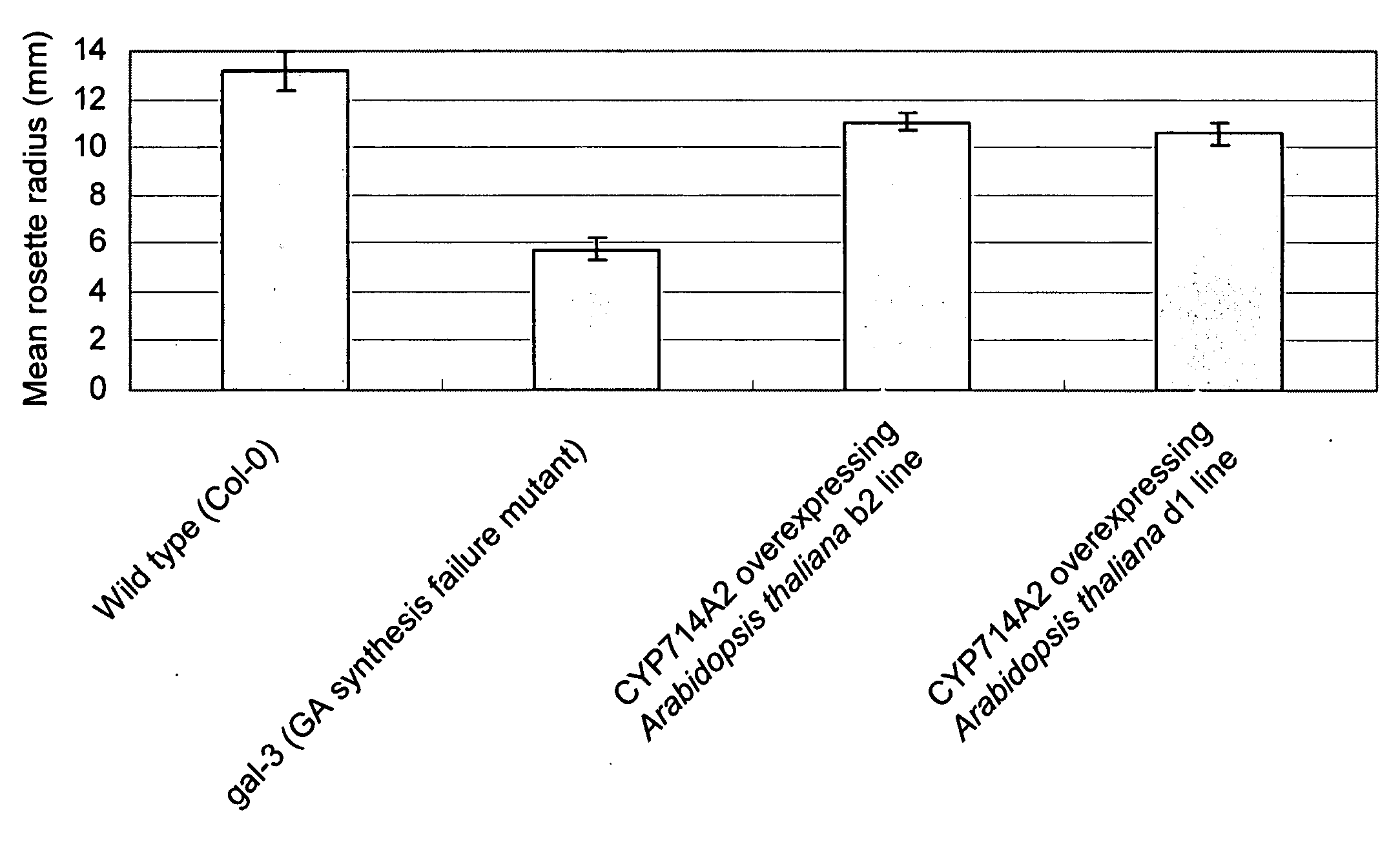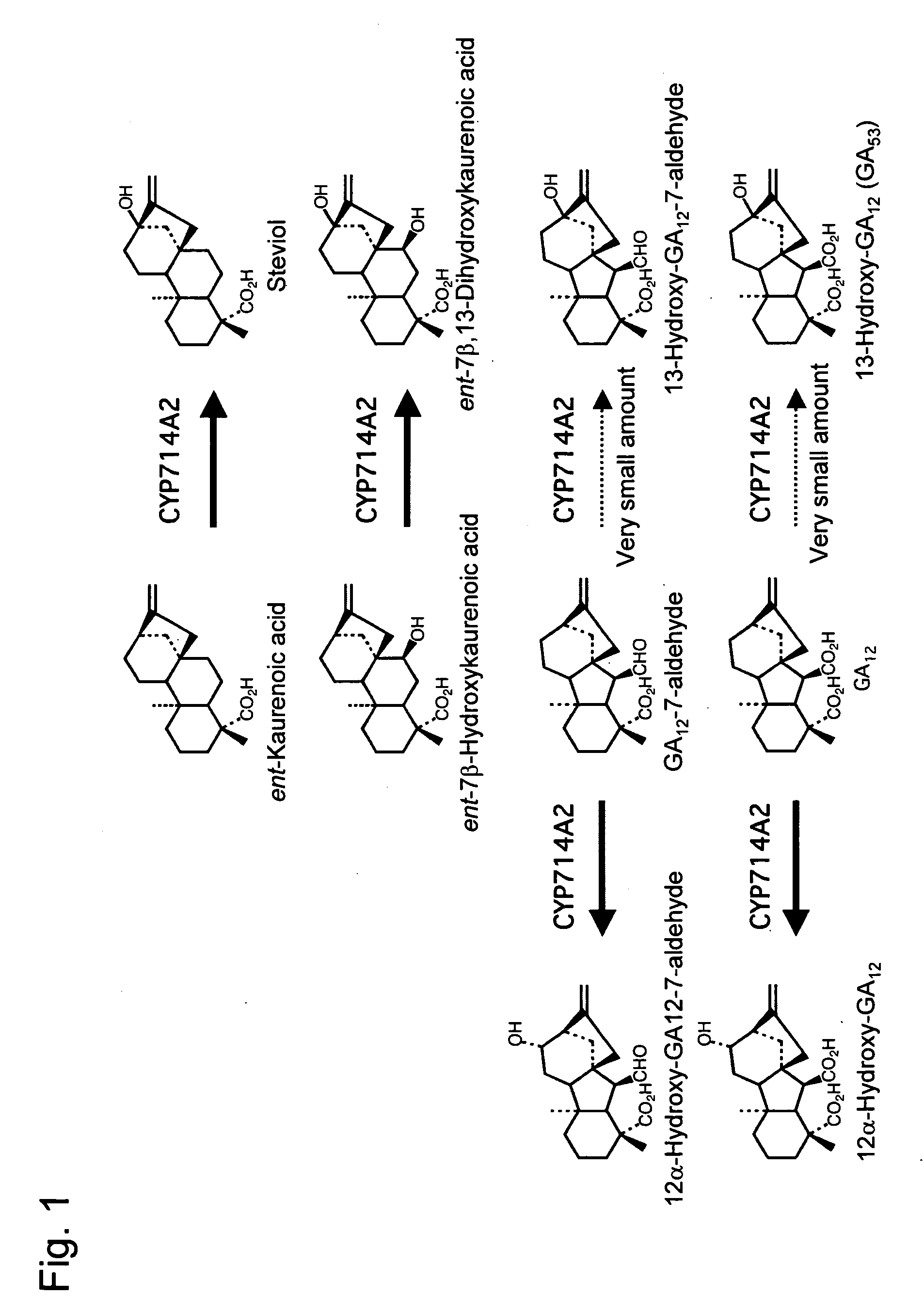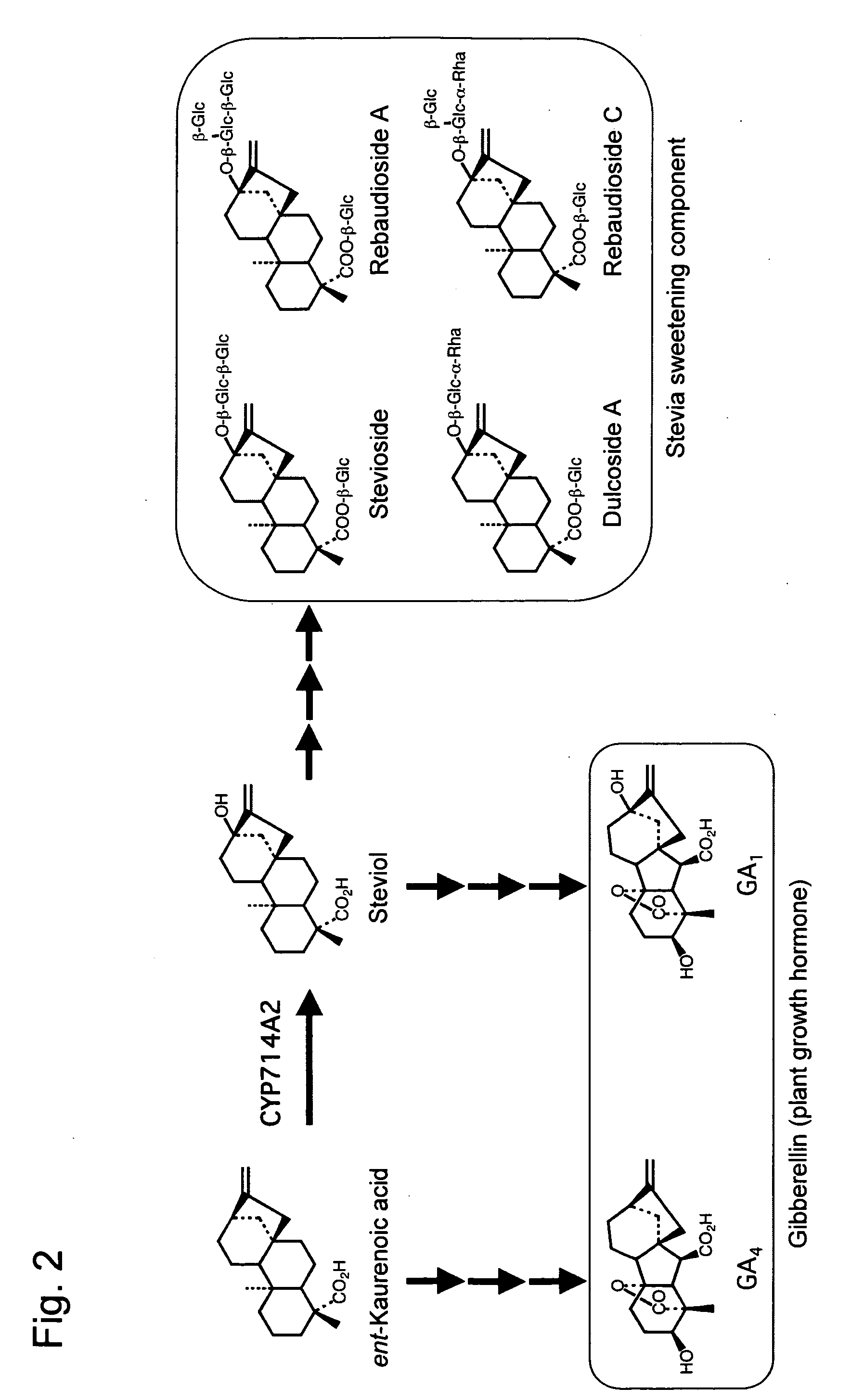Method for producing steviol synthetase gene and steviol
a technology of steviol synthetase and steviol, which is applied in the field of steviol synthetase gene encoding an enzyme, can solve the problem that no finding about the steviol synthetase gene has been obtained to da
- Summary
- Abstract
- Description
- Claims
- Application Information
AI Technical Summary
Benefits of technology
Problems solved by technology
Method used
Image
Examples
example 1
Functional Testing of Novel Steviol Synthetase
[0057]The complete length cDNA of CYP714A2, a cytochrome P450 enzyme gene, was isolated from an immature pod of Arabidopsis thaliana by RT-PCR. The following primer set, the Expand High Fidelity PLUS PCR System (Roche), and the Pyrobest (Takara Bio Inc.) were used for RT-PCR. Then, the restriction enzyme sites were introduced by performing PCR using cDNA obtained by RT-PCR as a template and PCR primers 714A2-F1 (CGGGATCCATGGAGAGTTTGGTTGTTCATAC [SEQ ID NO: 3]: the BamHI restriction enzyme site was positioned immediately before the translation start codon [underlined]) and 714A2-R1 (GGGGTACCTCAAACAACCCTAATGACAACAC [SEQ ID NO: 4]: the KpnI restriction enzyme site was positioned immediately after the stop codon [underlined]). The product was digested with restriction enzymes BamHI and KpnI and ligated to the BamHI / KpnI site of the pYeDP60 vector. The pYeDP60 vector is a known vector which induces expression of a cytochrome P450 gene in the p...
example 2
Preparation of Steviol Synthetase Gene Overexpressing Plant
[0061]PCR was performed using a cDNA clone of the steviol synthetase gene prepared in Example 1 as a template, PCR primers At5g24900F (BamHI) (CCGGATCCATGGAGAGTTTGGTTGT [SEQ ID NO: 5]: the BamHI restriction enzyme site was positioned immediately before the translation start codon [underlined]) and At5g24900R (PstI) (CCCTGCAGTCAAACAACCCTAATGA [SEQ ID NO: 6]: the PstI restriction enzyme site was positioned immediately after the stop codon [underlined]) to introduce the restriction enzyme sites. The product obtained by PCR was cloned into a plasmid vector by ligation, and the nucleotide sequence was confirmed. A cDNA fragment of the steviol synthetase gene obtained by digesting this plasmid with BamHI and PstI was ligated to the BamBI / PstI site between the cauliflower mosaic virus 35S promoter (potent constitutive expression promoter) and the NOS terminator in the pCGN binary vector. This binary vector was introduced into Agrob...
example 3
Quantification of ent-kaurenoic Acid and Steviol in Steviol Synthetase Gene Overexpressing Arabidopsis thaliana
[0064]Two independent lines of the steviol synthetase gene overexpressing Arabidopsis thaliana prepared in Example 2 (designated as b2 and d1) and the wild-type Arabidopsis thaliana (Col-0) were grown under white light for 24 hours. 40 ng of 17,17−2H2-labeled gibberellin was added to an aerial part immediately before bolting having a fresh weight of 5 g as an internal standard and extracted with 80% acetone. The extract was dried, then partitioned into solvents with 50% acetonitrile and n-hexane, and dried. The following two elution fractions were prepared.
[0065]Elution fraction 1: The hexane partition (containing kaurenoic acid) was subjected to silica gel chromatography. The sample was suspended in hexane and loaded on a silica gel column. After elution with hexane, the kaurenoic acid fraction was eluted with hexane:ethyl:acetate (85:15).
[0066]Elution fraction 2: The 50%...
PUM
| Property | Measurement | Unit |
|---|---|---|
| Length | aaaaa | aaaaa |
| Fraction | aaaaa | aaaaa |
| Ratio | aaaaa | aaaaa |
Abstract
Description
Claims
Application Information
 Login to View More
Login to View More - R&D
- Intellectual Property
- Life Sciences
- Materials
- Tech Scout
- Unparalleled Data Quality
- Higher Quality Content
- 60% Fewer Hallucinations
Browse by: Latest US Patents, China's latest patents, Technical Efficacy Thesaurus, Application Domain, Technology Topic, Popular Technical Reports.
© 2025 PatSnap. All rights reserved.Legal|Privacy policy|Modern Slavery Act Transparency Statement|Sitemap|About US| Contact US: help@patsnap.com



